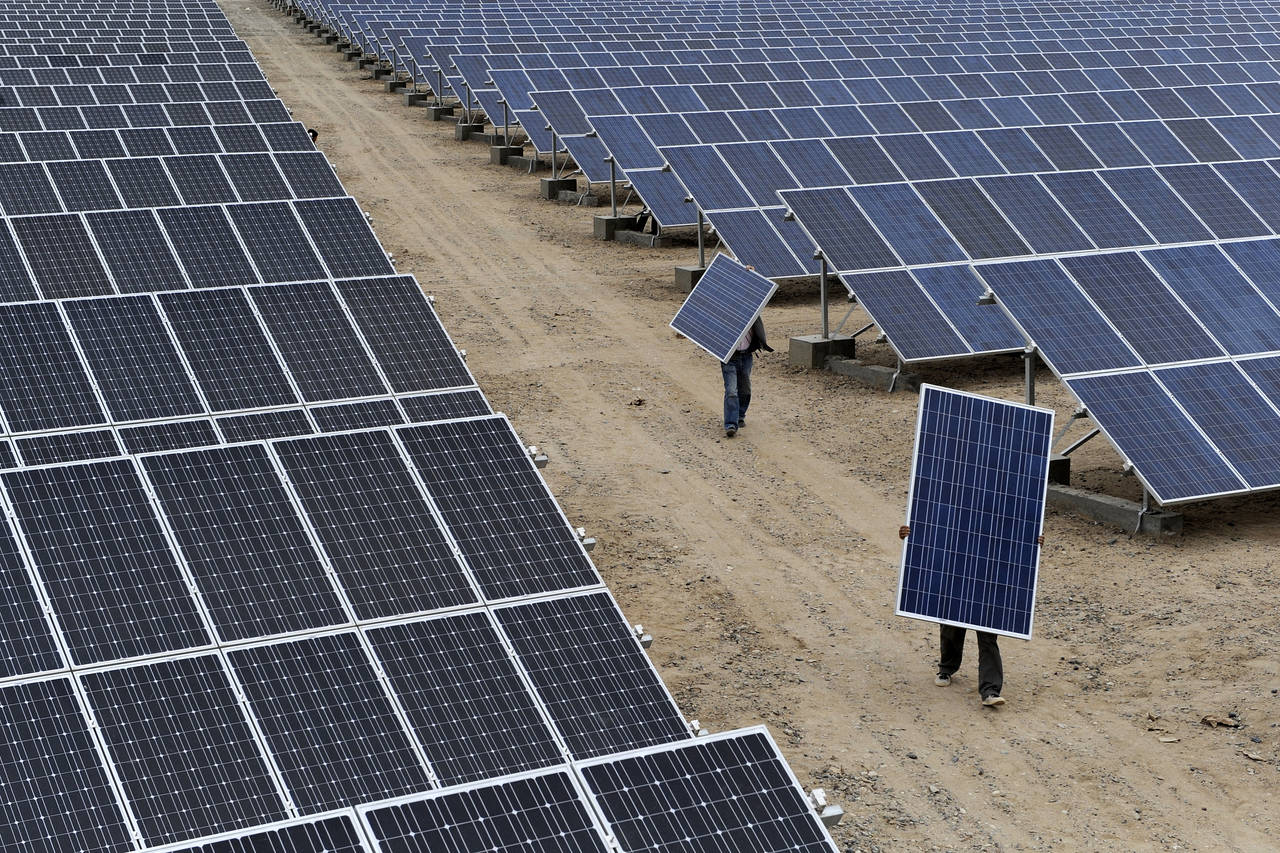US Imposes New Tariffs On Southeast Asian Solar Imports

Table of Contents
Reasons Behind the New Tariffs
The imposition of these new tariffs stems from a long-running investigation into allegations of tariff evasion and circumvention. Essentially, the US government argues that Southeast Asian manufacturers are circumventing previously imposed tariffs on Chinese solar products by assembling panels in these countries using components largely sourced from China. This practice, according to the US, undermines efforts to protect domestic solar manufacturers and level the playing field.
The argument for these tariffs centers on safeguarding American jobs and promoting domestic solar manufacturing. Proponents contend that these measures are necessary to counter unfair competition from countries with potentially lower labor costs and less stringent environmental regulations. This protectionist stance also emphasizes the importance of national security interests, aligning with broader goals of energy independence and reducing reliance on foreign energy sources.
- Allegations of circumvention: The investigation revealed evidence suggesting that Chinese companies are using Southeast Asia as a transit point to avoid existing tariffs on their solar products.
- Protecting domestic jobs: The tariffs aim to boost the US solar manufacturing sector and create or retain American jobs in this growing industry.
- National security concerns: Reducing reliance on foreign suppliers for critical energy infrastructure is a key national security argument behind these tariffs.
- Relevant trade laws: The tariffs are justified under existing US trade laws, specifically those related to anti-dumping and countervailing duties.
Impact on Southeast Asian Economies
The impact of these US solar tariffs on Southeast Asian economies is substantial and multifaceted. Countries like Vietnam, a major solar panel exporter, are experiencing reduced profitability for their solar manufacturers, leading to potential job losses across the manufacturing and supply chain. The tariffs also negatively affect foreign investment in the region's solar sector, impacting economic growth and development.
The affected Southeast Asian nations might retaliate with their own tariffs or trade restrictions on US goods, escalating trade tensions and potentially impacting other sectors beyond solar energy. This retaliatory action could trigger a broader trade war, harming overall global economic stability.
- Reduced profitability and export revenues: Southeast Asian solar manufacturers face decreased profits and market access due to the US tariffs.
- Job losses across the supply chain: From raw material suppliers to panel assemblers, job losses are anticipated across the affected industries.
- Reduced foreign investment: The uncertainty created by these tariffs discourages foreign investment in the Southeast Asian solar sector.
- Potential for retaliatory measures: Southeast Asian nations may respond with their own tariffs, escalating trade tensions.
Implications for the US Solar Market
While intended to protect domestic manufacturers, these tariffs are likely to have a complex impact on the US solar market. In the short term, consumers can expect price increases for solar panels, potentially slowing down the growth of the solar energy sector. Large-scale solar projects might also face delays as developers grapple with higher costs and supply chain disruptions. This could negatively impact the US's transition to renewable energy and its climate goals.
- Increased solar panel prices: The tariffs will inevitably lead to higher prices for solar energy systems, impacting consumer affordability.
- Project delays and disruptions: Large-scale solar projects may experience delays as developers adapt to the new tariff landscape.
- Reduced solar energy adoption: The higher costs could hinder the broader adoption of solar energy across the US.
- Impact on renewable energy goals: The slower growth of the solar sector may impede the US's progress towards its renewable energy targets.
Potential Solutions and Future Outlook
Addressing the complexities arising from these tariffs requires a multifaceted approach. Negotiations between the US and Southeast Asian countries are crucial to find a mutually beneficial solution that addresses concerns about fair trade and circumvention while minimizing economic disruption. Exploring alternative solar panel suppliers from countries not subject to tariffs is also an important strategy for mitigating the impact.
- Bilateral and multilateral negotiations: Dialogue between the US and Southeast Asian governments is essential to resolve trade disputes.
- Diversification of supply chains: The US could explore sourcing solar panels from different regions to lessen its reliance on Southeast Asia.
- Review of current trade policies: A comprehensive review of US trade policies related to solar energy is necessary to ensure a sustainable and equitable approach.
- Promoting domestic manufacturing: Investment in and support for US solar manufacturing are key to reducing reliance on imports.
Navigating the New Landscape of US Solar Tariffs
The imposition of US solar tariffs on Southeast Asian imports has created a complex situation with far-reaching consequences. The tariffs aim to protect domestic manufacturers and achieve energy independence, but they also risk disrupting global supply chains, harming Southeast Asian economies, and potentially slowing the growth of renewable energy in the US. The future will depend on diplomatic efforts, adjustments in the solar industry supply chains, and a careful evaluation of long-term trade policies. Stay updated on the evolving situation of US solar tariffs and their impact on the global solar market. Learn more about the latest developments and policy changes by following reputable news sources and industry publications focusing on renewable energy and trade.

Featured Posts
-
 Discovering History A Lifetime Ago With The Baim Collection
May 30, 2025
Discovering History A Lifetime Ago With The Baim Collection
May 30, 2025 -
 Should You Stay For Marvel To Sinner Post Credit Scenes A Pop Culture Happy Hour Guide
May 30, 2025
Should You Stay For Marvel To Sinner Post Credit Scenes A Pop Culture Happy Hour Guide
May 30, 2025 -
 Trump Vs Ticketmaster El Impacto De La Nueva Orden Ejecutiva En La Reventa De Boletos
May 30, 2025
Trump Vs Ticketmaster El Impacto De La Nueva Orden Ejecutiva En La Reventa De Boletos
May 30, 2025 -
 Awstabynkw Zkhm Mwsm Almlaeb Altrabyt Yubshr Bmstqbl Waed Alshrq Alawst
May 30, 2025
Awstabynkw Zkhm Mwsm Almlaeb Altrabyt Yubshr Bmstqbl Waed Alshrq Alawst
May 30, 2025 -
 Bts V And Jungkook Military Honed Bodies Revealed In Viral Gym Pictures
May 30, 2025
Bts V And Jungkook Military Honed Bodies Revealed In Viral Gym Pictures
May 30, 2025
